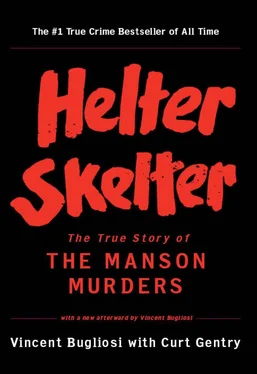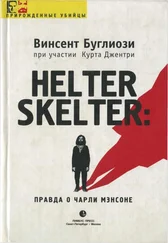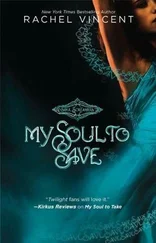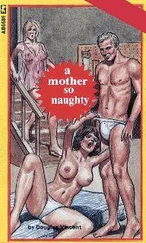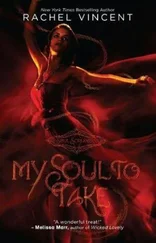The fate of Charles Manson, Charles Watson, Susan Atkins, Patricia Krenwinkel, Leslie Van Houten, and Robert Beausoleil was decided on February 18, 1972. That day the California State Supreme Court announced that it had voted 6–1 to abolish the death penalty in the state of California. The opinion was based on Article I, Section 6, of the State Constitution, which forbids “cruel or unusual punishment.” [90] In June 1972 the United States Supreme Court ruled, in a 5–4 decision, that the death penalty, if imposed in an arbitrary fashion with the jury being given absolute discretion and no guidelines, constituted “cruel and unusual punishment” in violation of the Eighth Amendment to the U.S. Constitution. Although a number of states, including California, have since passed laws restoring the death penalty and making it mandatory for certain crimes, including mass murders, at the time this is written the United States Supreme Court has yet to rule on their constitutionality. Even if the California law is let stand, it would not affect the Manson Family killers, since the new statute is not retroactive.
The sentences of the 107 persons awaiting execution in California were automatically reduced to life imprisonment.
Manson, in Los Angeles as a defense witness in the Bruce Davis trial, grinned broadly on hearing the news.
In California a person sentenced to life imprisonment is eligible to apply for parole in seven years.
By August 1972 the last prisoners had left California’s Death Rows, most to be transferred to the “yards,” or general inmate population, of various state penal institutions. Although at this writing Atkins, Krenwinkel, and Van Houten remain in the special security unit constructed for them at the California Institute for Women at Frontera, it is likely that in time they will join the general population also.
In his psychiatric report on Patricia Krenwinkel, Dr. Joel Hochman said that of the three girls Katie had the most tenuous hold on reality. It was his opinion that if she were ever separated from the others and the Manson mystique, it was quite possible she would lose even that, and lapse into complete psychosis.
With regard to Leslie Van Houten, who of the three girls was least committed to Manson, yet still murdered for him, I fear that she may grow harder and tougher; I have very little hope for her eventual rehabilitation.
Writing of Susan Atkins, Los Angeles Times reporter Dave Smith expressed something which I had long felt. “Watching her behavior—bold and actressy in court, cute and mincing when making eye-play with someone, a little haunted when no one pays attention—I get the feeling that one day she might start screaming, and simply never stop.”
As for the other convicted Manson Family killers—Charles Watson; Robert Beausoleil; Steve Grogan, aka Clem; and Bruce Davis—all are now in the general inmate population. Tex is no longer playing insane and has a girl friend who visits him regularly. Bobby received a certain amount of national attention when he was interviewed by Truman Capote during a TV documentary on American prisons. Not long afterward his jaw was broken and his hand dislocated in a brawl in the yard of San Quentin. The fight was the result of a power struggle over the leadership of the Aryan Brotherhood, with which Beausoleil had become affiliated. The AB, which is believed responsible for more than a dozen fatal stabbings in various California prisons in the last few years, is the successor to several earlier groups, including a neo-Nazi organization. Its total membership is not known, but it is believed to have about two hundred hard-core inmate followers, and it espouses many of the same racial principles that Charles Manson did. The legacy lives on.
Of all the Manson Family killers, only their leader merits special handling. In October 1972, Charles Manson was transferred to the maximum security adjustment center at Folsom Prison in Northern California. Described as “a prison within a prison,” it provides special housing for “problem inmates” who cannot be safely controlled in the general prison population. With the transfer Manson lost not only all of the special privileges afforded those awaiting execution, he also lost his regular inmate privileges, because of his “hostile and belligerent attitude.”
“Prison is my home, the only home I ever had,” Manson often said. In 1967 he begged the authorities not to release him. Had anyone heeded his warning, this book need never have been written, and perhaps thirty-five to forty people now dead might still be alive.
In convicting him, Manson said, I was only sending him home. Only this time it won’t be the same. Observed San Quentin warden Louis Nelson, before Manson was transferred to Folsom: “It would be dangerous to put a guy like Manson into the main population, because in the eyes of other inmates he didn’t commit first-class crimes. He was convicted of killing a pregnant woman, and that sort of thing doesn’t allow him to rank very high in the prison social structure. It’s like being a child molester. Guys like that are going to do hard time wherever they are.”
Too, like Sirhan Sirhan, convicted slayer of Senator Robert Kennedy, his notoriety is his own worst enemy. For as long as he remains in prison, Manson will be looking over his shoulder, aware that any con hoping to make a reputation need only put a shiv in his back.
That Manson, Watson, Beausoleil, Davis, Grogan, Atkins, Van Houten, and Krenwinkel will be eligible for parole in 1978 does not mean that they will get it, only that this is the earliest date they will be eligible to apply. The average incarceration in California for first degree murder is ten and a half to eleven years. Because of the hideous nature of their crimes and the total absence of mitigating circumstances, my guess is that all will serve longer periods: the girls fifteen to twenty years, the men—with the exception of Manson himself—a like number.
As for the leader of the Family, my guess is that he will remain in prison for at least twenty-five years, and quite possibly the rest of his life.
In mid-October of 1973 some thirty prisoners in California’s toughest lockup, Folsom Prison’s 4–A adjustment center, staged what was described by the San Francisco Chronicle as a “peaceful protest” against prison conditions.
The man who used and championed fear did not participate. According to the Chronicle story: “Mass murderer Charles Manson is among the inmates in 4–A, although prison spokesmen say he is not involved in this demonstration. Manson has been threatened by other inmates in the past, and authorities say he seldom ventures out of his cell for fear of being attacked.”
Twenty-five years after, as I said in my summation to the jury, Charles Manson “sent out from the fires of hell at Spahn Ranch three heartless, bloodthirsty robots” to commit the savage and nightmarish Tate-LaBianca murders, the nation continues to be fascinated with the Manson murder case. And the question I am always asked, particularly by the news media, is why?
Why has this mass murder case—as opposed to every other, and there have been many—continued to intrigue and captivate millions of people the world over? To the point where five-year anniversaries of the murders, as with no other murder case in America except the assassination of President John F. Kennedy, are marked by articles, news reports, and television specials, not just in the United States, but internationally. [91] This year, the British Broadcasting Company and ARD, German National Television, are airing twenty-fifth anniversary specials on the case.
To the point where, as reported in the Los Angeles Times , Manson receives more mail than any other inmate in the history of the U.S. prison system, an alarming amount of it from young people who tell him they want to join his Family; where Manson T-shirts are selling well today around the country; where there have been several plays about him, even an opera, The Manson Family , that premiered at New York City’s Lincoln Center in July of 1990—as well as a CD soundtrack of the opera released in 1992; where the multi-platinum rock band Guns N’ Roses sing a Manson composition, “Look at Your Game, Girl,” in their latest album; where, believe it or not, avant-garde typographers in California produced a new typeface called Manson in which for $95 art directors, per Time magazine, “can set their serial-killer Zeitgeist essays in Manson Regular, Manson Alternate or Manson Bold” (all renamed Mason after criticism); where “Free Manson” graffiti soils the landscape of Britain’s largest cities, and according to the BBC’s William Scanlan Murphy, Manson interest in Britain is approaching mini-mania proportions; [92] In a March 4, 1994, letter to me, Murphy writes: There are 32 British rock bands that I know about playing both Manson’s own songs and songs in support of him, and a further 40 or so in Europe, particularly Germany. Only last week, one of the worst I’ve heard, ‘Charlie’s 69 Was A Good Year’, came out, recorded by a band called Indigo Prime; I’m sorry to say that it appears to be selling well. For some reason, the neo-Manson cult seems to centre in Manchester, where there are five stores selling ‘Free Charles Manson’ T-shirts (which are fantastically popular on Rave dance floors) and bootlegged records of his music; however, it’s far from exclusive to Manchester—there was an all-Manson concert in London in January, attended by 2,000 people. There is a full-fledged Manson Appreciation Society, ‘Helter Skelter UK’, based in Warrington, Cheshire. Posters supporting Manson are a common sight in the major cities, especially in the run-up to concerts by the Mansonite bands. The majority of the supporters of these bands are under 25. The truly frightening part is the fact that many of them, when asked, turn out to be Manson ‘buffs’ who have read all they can find about Manson, and strongly approve of Helter Skelter. There are very strong links to ultra-far-right political parties, particularly the British National Party.
where the television adaptation of this book about the case was, when it aired in 1976, the most watched television movie in the history of the medium and, like no other film of a murder case ever, has continued to be shown, year after year without fail, in the United States and many other countries of the world; where a March 1994 ABC television special on the case produced the highest-ever ratings for a network magazine show debut. Again, why is this so?
Читать дальше
